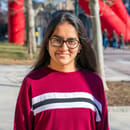During quarantine, I’ve watched a lot of animated TV shows. The animation genre is really exciting, as it pushes the boundaries of what can be portrayed on-screen. There’s a lot you can do with animation that simply can’t be done with traditional television.
For example, in the Netflix show, Bojack Horseman, the episode “Fish Out of Water” has stunning animation, and, because it takes place underwater, there’s no dialogue until the very end (I highly recommend watching Bojack Horseman, as it’s a thought-provoking series that touches on many important issues like sexual assault and feminism, but I digress.)
Here are some characters I love from animated shows, because they deviate from what we usually see portrayed in media (warning: spoilers ahead!)
- Toph Beifong from Avatar: The Last Airbender (ATLA)
-
Toph is one of my favorite characters from ATLA. In fact, the episode in which she was introduced lives rent-free in my mind. Her sheer bravado and confidence, backed by her legendary earthbending skills, are admirable. She’s also unapologetic about who she is.
I love how Toph’s blindness is portrayed as a part of what helps her excel at earthbending, as well as invent metalbending later in the show. She’s a lethal opponent, because she waits, listens, and then strikes in a fight. There’s something beautiful about seeing a tiny 12-year-old girl literally annihilate adults because that’s just how talented she is. Every fight scene with Toph is a gift that keeps on giving.
Additionally, the show uses Toph’s character to portray how harmful it can be to put people in boxes due to preconceived notions: Toph’s parents are controlling; they see her as a helpless little girl who can’t take care of herself due to her disability, and they cling to that notion even after she proves how gifted she is as a fighter. This is in direct contrast to protagonists Aang, Katara and Sokka, who never treat her as fragile or weak. Toph’s parents’ refusal to accept her leads to her running away from home and training Aang, the avatar.
ATLA’s narrative does a wonderful job of showing the viewer that people should be judged by their actions, not stereotypes.
- General Amaya from The Dragon Prince
-
General Amaya is a brilliant, courageous, and funny character. She’s a high-ranking official in the military of Katolis, and she’s also a deaf person of color. She communicates in American Sign Language throughout the show, occasionally translated by her interpreter, Commander Gren.
Amaya is shown to be kind and a great judge of character; she understands people’s motivations and true intentions remarkably quickly. She’s also honorable, choosing to save the life of her enemy and go to great lengths to protect her family.
Amaya is a great leader who is taken seriously by the narrative, and her deafness is simply treated as another part of her identity by everyone around her.
- Double Trouble from She-Ra and the Princesses of Power (SPOP)
-
SPOP is brilliant in a lot of ways – it features people with different body types, sexualities, and racial identities; it has amazing queer representation (I will die happy just because Catradora became canon.)
One of the best parts of SPOP for me is the inclusion of Double Trouble, a non-binary character voiced by a non-binary actor, Jacob Tobia. Double Trouble is a shapeshifter who starts their character arc as a spy for the villainous Horde. They’re confident, unafraid, and cause a lot of chaos as they decide who to support – the Horde or the Rebellion, the side of the protagonists. Due to their phenomenal acting skills and shape-shifting ability, Double Trouble is also just an incredibly fun character to watch on-screen.
SPOP does a wonderful job portraying a non-binary character whose pronouns are respected by all the other characters. All in all, SPOP normalizes queer representation and gives all audiences, especially children, the opportunity to see themselves in the characters.
Animated television shows have a lot of potential, as they are accessible to a wider audience – everyone from children to adults. They’ve also pioneered representation and made people feel seen. I highly recommend watching any of the series in this list; there’s a lot to learn from them, not to mention the creativity and passion that have gone into their creation.


